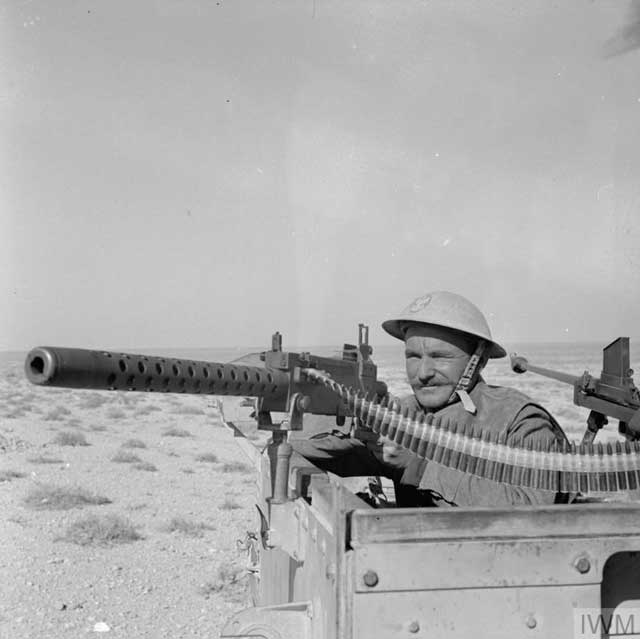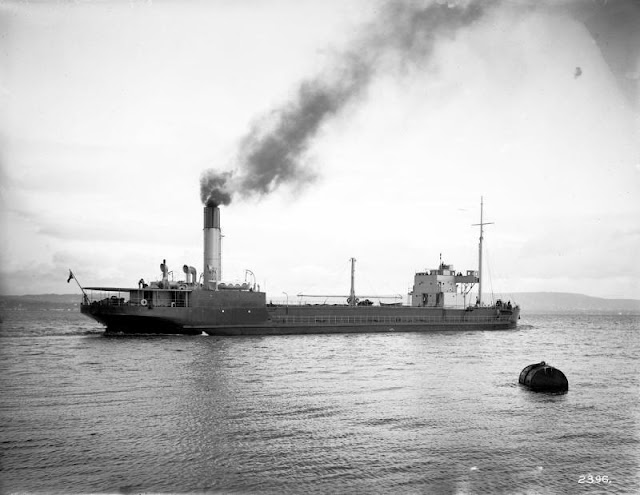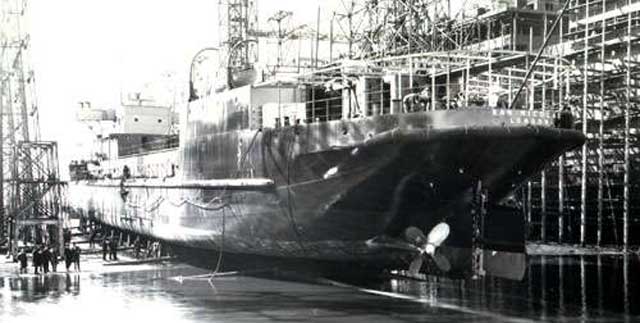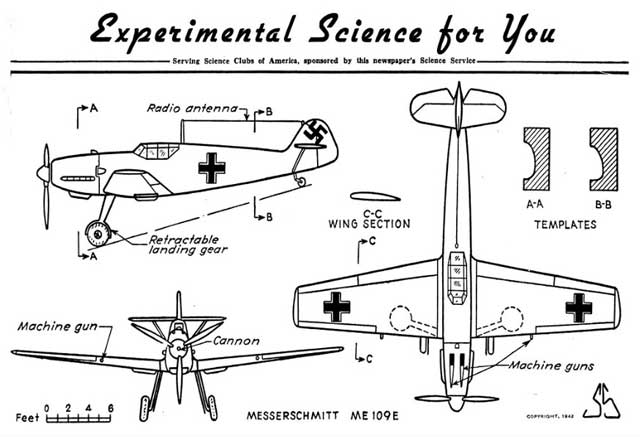Tuesday 17 February 1942
 |
| "Troops passing through Tobruk visit the graves of their comrades. The graves belong to Australian, Polish, South African, New Zealand, and British soldiers." 17 February 1942. © IWM (E 8448). |
In Burma, the situation is growing desperate for the British on the Bilin River. The river itself is dry, offering no protection, and Japanese troops have infiltrated the jungles in an attempt to cut the British lines of communications. The British are looking over their shoulders at the Sittang River, which offers better defensive advantages. The Indian 17th Division on the Bilin River prepares to retreat during the day and begins doing so after dark.
In Singapore, the Japanese conquerors continue reassembling the city in their own image. Already, they have renamed Singapore City "Light of the South" (Syonan-To), but the changes go much deeper than that. The British Malaya Command officially surrenders today, and while that is a settled issue, what happens with the Indian troops fighting for the Empire is not. Japanese Major Iwaichi Fujiwara is given command of the Indian troops, and he immediately transfers the command to Mohan Singh, a member of the Indian Independence Movement. Singh today declares the formation of the Indian National Army (INA) at the Farrer Park address and asks the approximately 40,000 Indian troops to join it in order to fight against the British Empire and (among other things) free India from British rule. About 30,000 of the Indian soldiers do, and some of them wind up serving as guards over their former British and Australian allies at Changi Prison.
 |
| Dutch destroyer Van Nes, sunk by Japanese bombers on 17 February 1942. |
The USAAF Fifth Air Force sends eight P-40s to attack the new Japanese presence at Palembang, Sumatra. Due to the distances involved, the fighters must first land at Batavia Airdrome, Java. However, perhaps due to forewarning by spies on Java, the Japanese are ready and waiting for the attack. A fierce dogfight develops, with five of the P-40s jettisoning their bombs to defend themselves. Three P-40s release their bombs on the invasion barges, while the five who jettison their bombs claim to down five Japanese aircraft at no loss to themselves.
 |
| Dutch freighter Sloet van de Beele, sunk on 17 February 1942. |
Operating off of Japan, US Navy submarine USS Triton (SS-201), on its second patrol, torpedoes and sinks Japanese freighter Shinyo Maru Number 5 off Nagasaki.
Eastern Front: The Stavka is determined to continue its winter offensive even though it has petered out after the initial surge. Today, the Red Air Force drops 7,373 paratroopers in the Rzhev area behind the German lines - though exactly where the actual front lines are, or whether there even are any, is more a matter of interpretation than reality. The weather is foggy, and the drops put many paratroopers in places where the Germans are able to quickly capture about a quarter of them. The rest wander about aimlessly, with some joining partisan detachments and others simply fighting for their own survival.
 |
| "Palestine. 17 February 1942. Group portrait of members of the 2/6th Australian General Hospital (2/6AGH)." Australian War Memorial P00458.003. |
RAF Coastal Command aircraft operating off Skudenes, Norway torpedo and sink 248-ton German (seized from Norway) trawler Eber (NS21).
 |
| "A merchant ship in convoy RA64 sails through heavy seas in the Arctic Ocean." Sometime between 17-28 February 1942. © IWM (A 27565). |
U-136 (Kptlt. Heinrich Zimmermann), on its first patrol out of Bergen, sinks 6914-ton British freighter Empire Comet, a straggler from Convoy HX-174, in the Atlantic about 33 miles north of Rockall. All 46 crew perish after the ship quickly sinks after a massive detonation on board.
On a voyage to Liverpool, Greek 6629-ton freighter SS Spyros runs aground off Lawrencetown, about 20 miles from Halifax, and is wrecked. Everyone survives.
British/Chinese Relations: Chinese leader Chiang Kai-shek embarrasses the British authorities by meeting with Muhammad Ali Jinnah, the leader of the All-India Muslim League. Tomorrow, Chiang meets with Mahatma Gandhi.
US/New Zealand Relations: The commander of the United States Army Air Force, General "Hap" Arnold, agrees to turn over to New Zealand six new North American O-47 observation aircraft for the defense of New Caledonia.
 |
| A ship's hangar catapult is seen under an F6F Hellcat belonging to VF-1 seen on the USS Yorktown (CV-10) main deck. The hangar catapults are ordered removed on 17 February 1942 (US Navy). |
The US Navy orders the removal of athwartships hangar deck catapults from Wasp, Yorktown, Enterprise, and Hornet. Hangar catapults are designed to launch scout aircraft when the flight deck is busy. This is to be done gradually during refits, with a deck catapult added in their places, and the process takes until 1944. The hangar catapults basically work, but the determination is made that they are less necessary than an added deck catapult. In addition, scout planes are found to be increasingly unimportant with the development of radar.
USAAF Fifth Air Force continues redeploying its forces in light of current realities. It sends the B-17s of the 88th Reconnaissance Squadron, 7th BG (Heavy), from Nandi Airport, Fiji to Australia.
USAAF 11th Air Force (Alaska) receives a new commander. He is Colonel Lionel R. Dunlap.
Chief Musician Charles Brendler becomes the second Leader of the Navy Band, staying in the position until 1962. Brendler serves 49 years in the Navy, all in the Navy Band, and retires with the rank of Commander.
The US Army decides today to locate the USAAF Officer Candidate School (OCS) in Miami, Florida. This involves the requisition of dozens of hotels to house the soldiers. Among many other men, movie star Clark Gable passes through OCS in Miami. The curriculum is intended to compress the essentials of the United States Military Academy into only four months. The OCS is led by Major General Walter Reed Weaver.
 |
| Walt Disney's Comics and Stories No. 17, February 1942. |
US Government: The Provost Marshal General's office sends a telegraphic survey out to its corps commanders which asks:
Probable that orders for very large evacuation of enemy aliens of all nationalities predominantly Japanese from Pacific Coast will issue within 48 hours. Internment facilities will be taxed to utmost. Report at once maximum you can care for, including housing, feeding, medical care, and supply. Your breakdown should include number of men, women, and children. Very important to keep this a closely guarded secret.A follow-up communication clarifies that 100,000 internees would be held east of the Western Defense Command and that there would be "50 percent in the Eighth Corps Area, 30 percent in the Seventh, and 10 percent each in the Fourth and Sixth." General DeWitt, head of the Western Defense Command, has been adamant that internment camps must be outside of his area.
There is a flurry of conferences today on the internment issue. President Roosevelt meets with Secretary Stimson, and Stimson later meets with Assistant Secretary of War John J. McCloy, Brigadier General Mark Clark, Provost Marshal Major General Allen W. Gullion, and Chief of the War Department's Alien Division Colonel Karl R. Bendetsen. Roosevelt makes clear to his top aides that evacuation is a military, not civilian, decision. Stimson is personally against a mass evacuation but finally decides that DeWitt should begin the process immediately. Attorney General Biddle then accepts a draft executive order from General Gullion authorizing the removal of both citizens and aliens from the Western Defense Command. This is the executive order that President Roosevelt ultimately signs.
 |
| An F6F Hellcat launching from a hangar catapult on USS Hornet (CV-12) (US Navy). |
Sunday afternoon the news of Singapore's capitulation came to a great many people as a tremendous shock. I had talked with the President and he said resignedly that, of course, we had expected it, but I know a great many people did not. Perhaps it is good for us to have to face disaster, because we have been so optimistic and almost arrogant in our expectation of constant success. Now we shall have to find within us the courage to meet defeat and fight right on to victory.At this point, the Japanese appear unstoppable. This may explain some of the decisions being made in Washington, D.C., during this period.
Future History: Huey Percy Newton is born in Monroe, Louisiana. He becomes a co-founder of the Black Panther Party in 1966, and in 1967 is involved in a shootout with police that leads to the death of a police officer. In 1974, Newton is accused of shooting a woman to death. He becomes an iconic revolutionary figure in some political circles. On 22 August 1989, Huey Newton is gunned down by Tyrone Robinson, a member of the Black Guerilla Family.
Dieter Laser is born in Kiel, Schleswig-Holstein, Germany. He becomes an award-winning actor in his native Germany. Laser is best known to English-speaking audiences from his role of Mantrid in science-fiction series "Lexx," a Canadian-German co-production. Dieter Laser passes away on 29 February 2020 in Berlin.
February 1942
February 1, 1942: The US Navy Strikes Back
February 2, 1942: Germans Recovering in Russia
February 3, 1942: Japanese Shell and Bomb Singapore
February 4, 1942: Battle of Makassar Strait
February 5, 1942: Empress of Asia Sunk
February 6, 1942: The Christmas Island Body
February 7, 1942: The Double-V Campaign
February 8, 1942: Japan Invades Singapore
February 9, 1942: French Liner Normandie Capsizes
February 10, 1942: US Car Production Ends
February 11, 1942: Tomforce Fails on Singapore
February 12, 1942: The Channel Dash
February 13, 1942: Japanese Paratroopers In Action
February 14, 1942: RAF Orders Terror Raids
February 15, 1942: Japan Takes Singapore
February 17, 1942: Indian Troops Defect to Japanese
February 18, 1942: Battle of Badung Strait
February 19, 1942: FDR Authorizes Internment Camps
February 20, 1942: O'Hare the Hero
February 21, 1942: Crisis in Burma
February 22, 1942: Bomber Harris Takes Over
February 23, 1942: Bombardment of Ellwood, California
February 24, 1942: US Raid on Wake Island
February 25, 1942: Battle of Los Angeles
February 26, 1942: Gneisenau Eliminated
February 27, 1942: Battle of Java Sea
February 28, 1942: Battle of Sunda Strait
2020


















